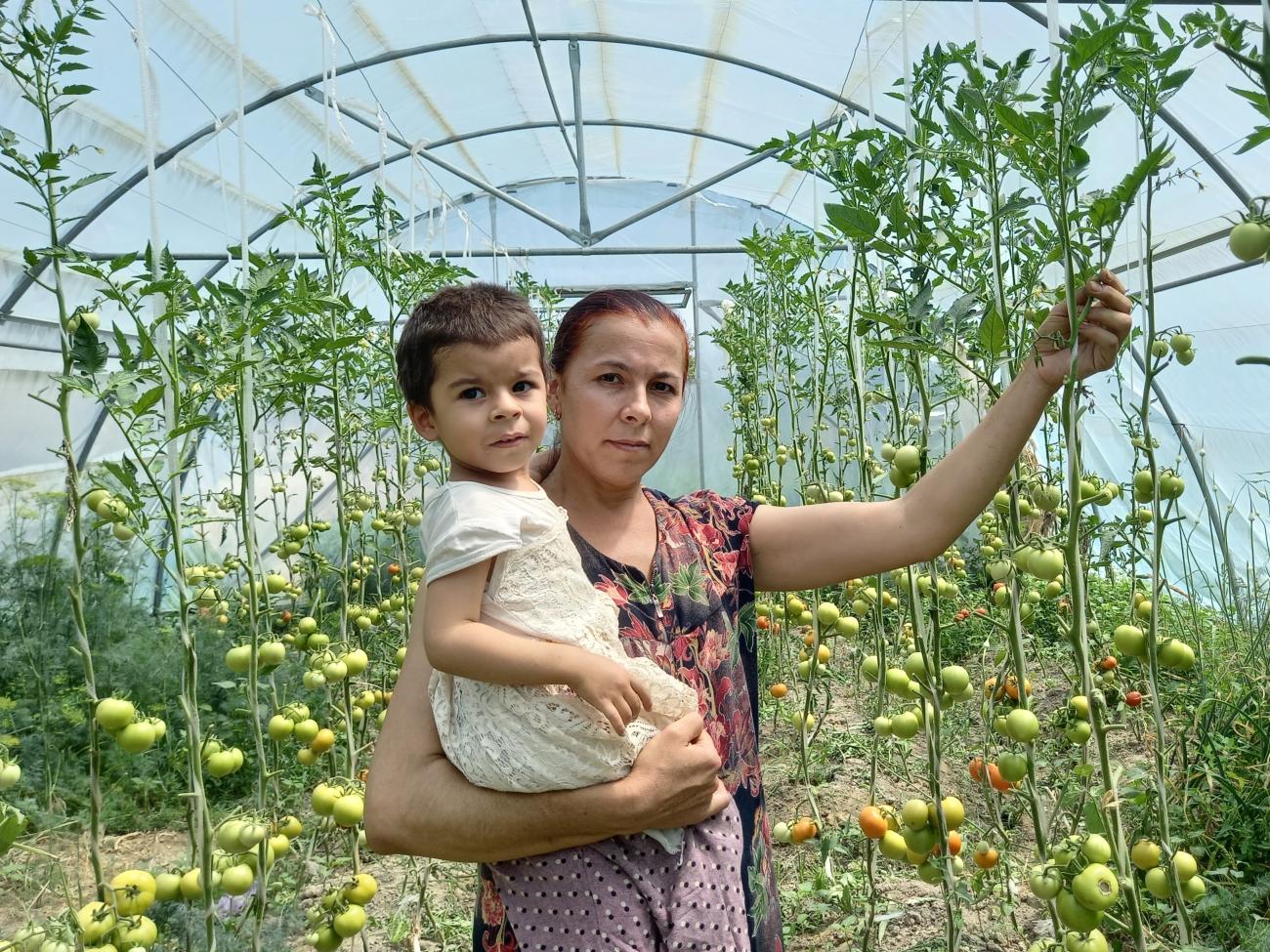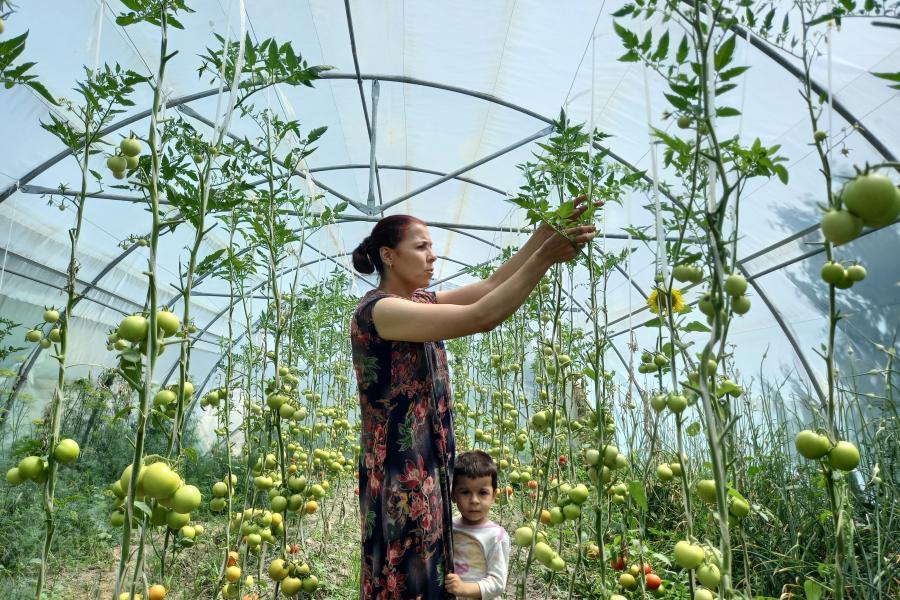Greenhouses – a stable source of income for women in Uzbekistan during the pandemic

Khushvakt Khusinova lives in a rural area on the outskirts of ancient Bukhara. Her husband was a labour migrant working in Russia to support their 5 children.
The family were registered in the “iron notebook” – a list of vulnerable groups compiled by the local authorities to provide them with targeted assistance. This is how the family then became a beneficiary of the FAO/GEF CACILM-2 project (“Integrated management of natural resources in drought-prone and saline agricultural production landscapes of Central Asia and Turkey”), which has been implemented in cooperation with the Ministry of Agriculture of the Republic of Uzbekistan since 2018. Within the framework of this project, 34 greenhouses were donated to rural residents living in the Bukhara and Kashkadarya regions. This aid has become part of the national socio-economic response to the crisis caused by the COVID-19 pandemic.
“We were all very happy when they came to our home to install a large, spacious greenhouse. They said it would serve as a new source of income for us all year round,” explains Khushvakt, adding, “I have not been involved in greenhouse farming myself, but I still noticed that the construction was made of a sufficiently high quality, with a reliable structure – made of durable material. They said that it retains heat well and is resistant to precipitation, moisture and temperature changes. After this, it was down to us as a family to get as much benefit as possible from the new greenhouse.”

As hardworking people, Khushvakt and her husband proactively set to work. Following the recommendations provided by FAO experts during a special training course for all greenhouse beneficiaries and via a working group established in Telegram messenger, the first requirement was to plant greens – spinach, coriander, dill. And when the first crop was ready, it was immediately successfully sold on the market. The beneficiaries then planted the second batch – cucumbers, tomatoes, green onions. Over time, profits began to increase, and fresh vegetables, grown with their own hands, appeared on their tables.
“The stable income from the greenhouse has allowed us to solve many problems. There is confidence in the future. My daughters need support to continue their education, and our eldest is now preparing to enter university. She dreams of becoming a doctor,” says Khushvakt.
Another beneficiary from the same region, Feruza Ergasheva, talks enthusiastically about the work the project has done. “We got the first harvest in the middle of March. Selling the greens grown in the greenhouse raised about 5 million soums (which is approximately equal to USD 500). This is a significant help in the household. We hope to grow more greens and bell peppers in September. The main thing is that a stable source of income has appeared. Every inch of our land is priceless, and everyone should work for their own welfare,” reflects Feruza, who now feels that she can put the dark days behind her.
In the past, the family had faced many difficulties. Feruza’s husband has a long-term illness, and Feruza left her job in the cotton mill to look after him. Of the three sons, the two eldest are abroad, and the youngest is still a student. In short, there is no one else around to look after the household. And then there were COVID-19 restrictions. It is no surprise that the news of the transfer of the greenhouse was received with great joy in the family. Today, having already mastered the greenhouse economy, after acquiring the necessary knowledge and skills, Feruza plans to generate even more profit from her greenhouse and supply fresh vegetables to the table all year round. As it turns out, the challenges did not hinder Feruza – they strengthened her resilience. Her eyes are filled with optimism, and her commitment to hard work leaves no room for doubt about the successful implementation of all her plans.
In general, the development of the greenhouse industry and the expansion of the vegetable range have contributed to an increase in domestic production of vegetables. This meets the needs of the country’s growing population for high-quality products during the off season. And for many, due to COVID-19 restrictions and related measures, greenhouses have become the optimal community-based solution for generating income.



